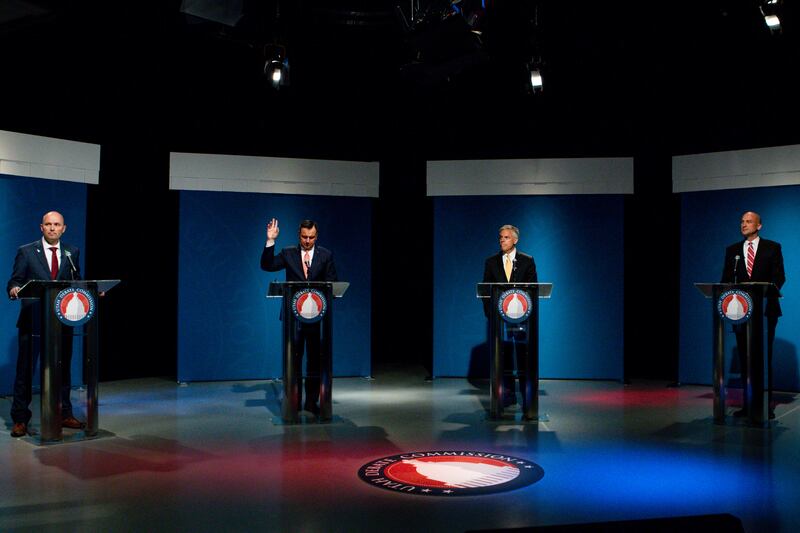SALT LAKE CITY — Haven’t voted yet in Tuesday’s primary election?
Be aware that even though Utah elections have been conducted largely by mail for several years now, there’s a lot about voting that’s different this time thanks to temporary changes put in place by the Utah Legislature to all but eliminate in-person voting because of COVID-19.
If you’ve just been waiting to fill out your ballot, you now have an extra day to get it in the mail. Ballots usually must be postmarked no later than the Monday before Election Day, but for this primary, the deadline has been moved to Tuesday. Drop boxes for ballots are also available throughout the state until 8 p.m. Tuesday.
“People are going to need to be patient. The sooner people send their ballots in, the sooner we’ll have results.” — State Elections Director Justin Lee
But if you don’t have a ballot that should have come in the mail earlier this month if you have a primary to vote in, or if you’re an unaffiliated voter who now wants to participate in partisan races, there aren’t going to be any polling places open this election to go to for help.
You’ll only be able to get assistance on Election Day if you live in one of seven counties — Salt Lake, Utah, Davis, Weber, Tooele, Box Elder and Iron — that opted to offer drive-up services in select locations. There, voters must remain in their cars as election workers attempt to sort out their ballot issues.
Voters using the drive-up service in Salt Lake County should be aware of the county’s new order mandating face masks be worn in public since they are likely to be less than 6 feet away from the election workers, who will be wearing masks, gloves and other protective gear.
But Salt Lake County Clerk Sherrie Swensen said no one would be turned away for not wearing a mask.
Details of the order that took effect over the weekend have been posted to the clerk’s website, Swensen said, “just to bring awareness and encourage people to follow that. But certainly, we wouldn’t deny service at the drive-up locations.”
Even with drive-up service, it’s too late to fix some voting problems, since the deadline has passed to switch political parties or register to vote. The changes for this election made earlier this year suspended the state’s same-day voter registration law for this election.
And once voters at a drive-up location gets their ballots, they’re going to be directed to fill them out someplace else before depositing them in a drop box, to keep what may be long lines of cars moving. Salt Lake County is setting up a dozen drive-up locations, but some counties will have only a single place for voters to go.
Swensen said she’s still worried the locations may be overwhelmed.
“We have done everything we can to try to ramp up these drive-up centers and respond to people and try to get them informed. I just, I hope it’s enough. I don’t know what more we could have done under the situation we’re in,” she said. “I’m concerned with a lot of people showing up ... just to see what it’s about.”
State Elections Director Justin Lee said he’s hopeful the counties with drive-up service will be able to move people along quickly. He said counties have been told to be prepared for a big voter turnout, already at just over 21% as of Friday morning.
As other states move to by-mail voting amid the coronavirus outbreak, “we’re in a place a lot of states would like to be in,” Lee said. In Utah, 90% of voters have voted by mail before, “so we don’t have the same number of people that you may see in other states that aren’t used to voting by mail.”
Still, primary elections are already confusing for many voters, Swensen said.

That’s been heightened this year by the high-profile Republican gubernatorial primary race between Lt. Gov. Spencer Cox, former Gov. Jon Huntsman Jr., former Utah House Speaker Greg Hughes and former Utah GOP Chairman Thomas Wright, she said.
Because the Republican Party closes its primary elections to nonmembers, there has been a much-publicized push to get Democrats and unaffiliated voters to register with the GOP so they can vote in the gubernatorial primary. Only unaffiliated voters who go to a drive-up location can still make that switch.
But even voters who have already requested and received a Democratic primary ballot — which doesn’t have a gubernatorial race because the party has already nominated University of Utah law professor Chris Petersen — have been contacting her office because they don’t see the GOP candidates listed, Swensen said.
“They see a lot of ads and they want to know when they’re going to get their ballot with the governor on it,” she said, adding she’s received hundreds of similar “nonstop emails and phone calls because they are so confused with this partisan primary concept.”
Lee agreed that “primary elections are notoriously hard to explain to voters.”
His biggest concern, however, is how long it may take to determine the primary winners.
With ballots being quarantined and fewer election workers in counting rooms to maintain social distancing, there’s now three weeks rather than two to finalize the vote totals. Also new is a a requirement that officials wait until 10 p.m. to announce any results, which usually come as soon as the polls close at 8 p.m.
“People are going to need to be patient,” Lee said. “The sooner people send their ballots in, the sooner we’ll have results.”


